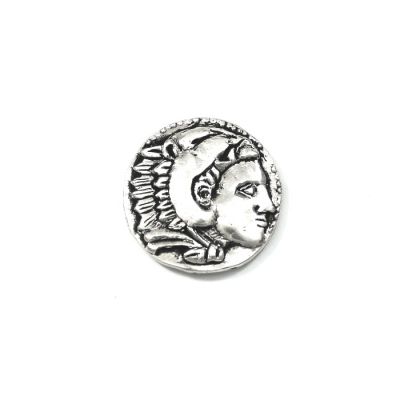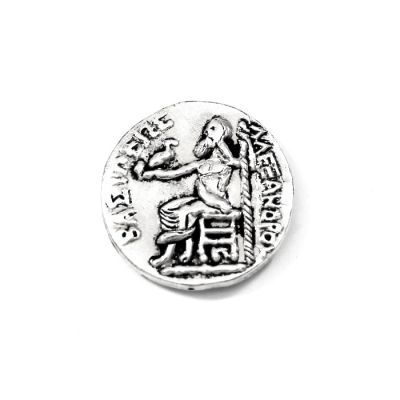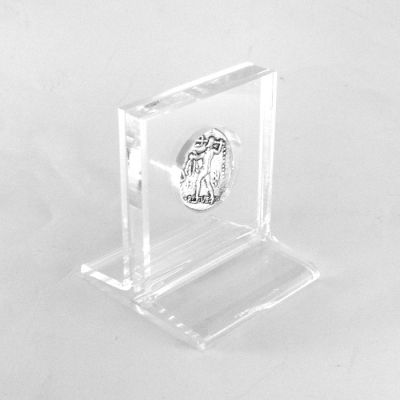Silver tetradrachm of Alexander III Macedon. Inspired by the history of Alexander the Great we created a copy of this specific coin in solid brass, silver-plated and placed in a specially designed acrylic case in order to be able to exhibit both sides. The one side of the coin depicts the head of Hercules and on the reverse Zeus enthroned and the inscription KING ALEXANDER (VASSILEOS ALEXANDROU). Handmade copy.
320-317 B.C. Mecedonia, Greece
Diameter of the coin: 2,5cm
Dimensions of the acrylic case: 5 cm x 6 cm x 5 cm
Every coin is offered in an acrylic case for protection and better presentation and gift packaging.
Take a look at the rest of the coins collection and the set of five silver-plated coins.
All prices include VAT.
The coins found in the grave monument of Amphipolis - coins with the head of Alexander the Great, coins of the 2nd century BC but also of the 3rd century AD - "illuminate" the other side of its multinational empire, but they also give some answers to the complex puzzle of the excavation.
Alexander the Great or the Great is not portrayed as long as he never lived in the coinage of coins. The icon depicting the head of the rude Heracles, which carries a lion-head on the front of his four-drachmas and drachmas, is often identified or confused with the inscription of ALEXANDROU while he lived and ALEXANDROS VASILEOS after death, with the portrait of the ruler.
His first illustrations depict the post-mortem cuts of the army's succession. Alexander is portrayed as deified in the cuttings of Lysimachus with the horns of Ammonos Zeus, in the cuts of Ptolemy of the Savior with the horns of Ammonos Zeus and horn of elephant as a headgear and finally in the first cuts of Seleucus A, depicted with helmet from leopard skin and bull horns.
The currency introduced by Alexander the Great for his territory did not disappear after the death of the army, but continued to be cut and circulated throughout the Hellenistic world until the arrival of the Romans.
In ancient literary sources these coins are referred to as "Alexander". After Alexander's death, dozens of news have been added to the existing mints in Macedonia, Epirus, Illyria, Paionia, Central Greece, the Peloponnese, Asia Minor, Cyprus, Syria, Phenicia, Egypt and Kyrenia, East and the Black Sea. The latest versions of the "Alexandres" were cut in the first quarter of the 1st century. B.C. from the Greek cities of Odessa and Mesimvria in the Black Sea.
Source: The "dollar" of Alexander the Great (article by Irene Orphanidou, thetoc.gr)
No posts found











